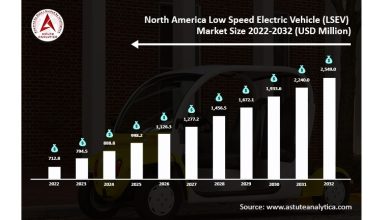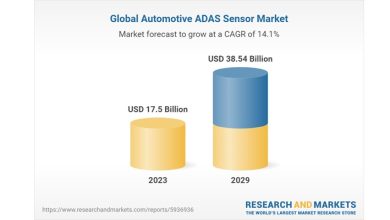Global electric car sales to hit 17 million in 2024
The Global EV Outlook, published by IEA, finds that global electric car sales are set to remain robust in 2024, reaching around 17 million by the end of the year. In the first quarter, sales grew by about 25% compared with the same period in 2023 – similar to the growth rate seen in the same period a year earlier, but from a larger base. The number of electric cars sold globally in the first three months of this year is roughly equivalent to the number sold in all of 2020.
In 2024, electric cars sales in China are projected to leap to about 10 million, accounting for about 45% of all car sales in the country. In the United States, roughly one in nine cars sold are projected to be electric – while in Europe, despite a generally weak outlook for passenger car sales and the phase-out of subsidies in some countries, electric cars are still set to represent about one in four cars sold.
This growth builds on a record-breaking 2023. Last year, global electric car sales soared by 35% to almost 14 million. While demand remained largely concentrated in China, Europe and the United States, growth also picked up in some emerging markets such as Viet Nam and Thailand, where electric cars accounted for 15% and 10%, respectively, of all cars sold.
Substantial investment in the electric vehicle supply chain, ongoing policy support, and declines in the price of EVs and their batteries are expected to produce even more significant changes in the years to come. The Outlook finds that under today’s policy settings, every other car sold globally is set to be electric by 2035. Meanwhile, if countries meet their announced energy and climate pledges in full and on time, electric cars would comprise two in three of all cars sold by 2035. In this scenario, the rapid uptake of electric vehicles – from cars to vans, trucks, buses, and two- and three-wheelers – avoids the need for around 12 million barrels of oil per day, on a par with current demand from road transport in China and Europe combined.
“The continued momentum behind electric cars is clear in our data, although it is stronger in some markets than others,” said IEA Executive Director Fatih Birol. “Rather than tapering off, the global EV revolution appears to be gearing up for a new phase of growth. The wave of investment in battery manufacturing suggests the EV supply chain is advancing to meet automakers’ ambitious plans for expansion. As a result, the share of EVs on the roads is expected to continue to climb rapidly. By 2030, today’s policy settings alone indicate that electric cars will constitute almost one in three vehicles on the roads in China, and almost one in five in both the United States and European Union. This shift will have major ramifications for both the auto industry and the energy sector.”
The report finds that manufacturers have taken major steps to deliver on the strengthening EV ambitions of governments, including by making significant financial commitments. High levels of investment over the past five years have positioned the world’s capacity to produce batteries for EVs well. It can keep up with demand, even as it rises sharply over the next decade. The pace of the transition to EVs may not be consistent and will hinge on affordability, the report emphasises.
In China, more than 60% of electric cars sold in 2023 were already less expensive to buy than their conventional equivalents. In Europe and the United States, the purchase prices for cars with internal combustion engines remained cheaper on average. However, intensifying market competition and improving battery technologies are expected to reduce prices in the coming years. Even where upfront prices are high, the lower operating costs of EVs mean the initial investment pays back over time.
Growing electric car exports from Chinese automakers accounted for more than half of all electric car sales in 2023. This could add to downward pressure on purchase prices. Chinese companies, which are also setting up production facilities abroad, have already seen strong sales of more affordable models launched in 2022 and 2023 in overseas markets. This highlights that the composition of the main EV-producing economies is diverging considerably from the traditional auto industry.
The report emphasizes the crucial need to ensure public charging availability keeps up with electric vehicle sales for growth. In 2023, the global installation of public charging points surged by 40%, with fast chargers seeing faster growth. However, to meet a level of electric vehicle deployment in line with the pledges made by governments, charging networks need to grow sixfold by 2035. Policy support and meticulous planning are crucial to prevent the surge in electric vehicle charging demand from straining electricity grids.
Accompanying the Global EV Outlook 2024 are the Global EV Data Explorer and the Global EV Policy Explorer. These online tools allow users to interactively explore EV statistics, projections and policy measures worldwide.


